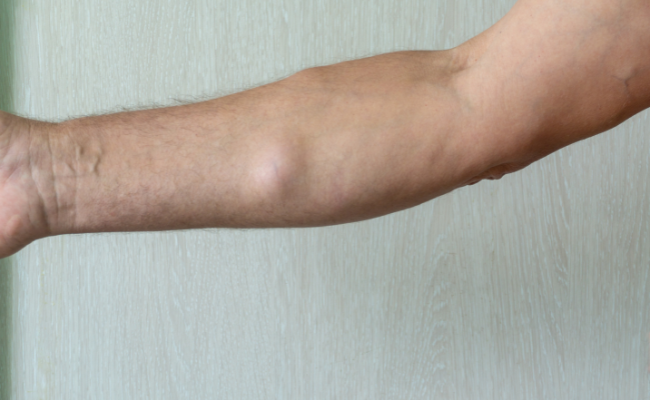How to Treat Lipoma?
- October 30, 2023
- No Comments

What is Lipoma?
Lipoma, a prevalent and generally harmless soft tissue tumor made up of fat cells, manifests as gradual, rubbery lumps situated just beneath the skin. Although typically benign, these growths can become bothersome or raise cosmetic concerns, prompting individuals to seek treatment.
Characterized as rounded or oval masses beneath the skin, lipomas, primarily composed of fat, display easy mobility and typically lack associated pain. While they can manifest anywhere on the body, they commonly occur on the back, trunk, arms, shoulders, and neck.
These slow-growing and non-cancerous soft tissue tumors often require no intervention. However, if a lipoma causes discomfort, healthcare providers can conduct an outpatient procedure for its removal. This straightforward intervention effectively addresses concerns linked to the lipoma, ensuring both physical comfort and psychological well-being.
Why Lipomas Occur?
The exact cause of lipomas is not well understood, but there are several factors that may contribute to their development:
- Genetics: There is a hereditary component to the development of lipomas, suggesting a genetic predisposition.
- Age: Lipomas are more commonly observed in middle-aged adults, though they can occur at any age.
- Other Conditions: Certain conditions, such as adiposis dolorosa or Gardner syndrome, may increase the likelihood of developing lipomas.
How to Manage Lipomas?
- Monitoring: In many cases, lipomas do not require treatment and can be monitored over time. If the lipoma is small, slow-growing, and not causing any symptoms, a "watch and wait" approach may be recommended.
- Surgical Removal: Surgical excision is a common and effective treatment for lipomas, especially if they are causing discomfort, pain, or cosmetic concerns. This procedure involves removing the lipoma and its surrounding capsule through a small incision.
- Liposuction: Liposuction may be considered for smaller, more accessible lipomas. This technique involves using a suction device to remove the fatty tissue through a tiny incision.
- Steroid Injections: In some cases, steroid injections may be used to reduce the size of a lipoma. However, this is not a permanent solution, and the lipoma may reoccur.
- Lipoma Removal with Minimal Scarring: Advancements in technology, such as laser lipolysis or minimally invasive procedures, may offer alternatives to traditional surgical removal, resulting in reduced scarring.
Treatment Solutions for Lipomas:
- Surgical Excision: Surgical removal is a standard and effective treatment for lipomas. The procedure involves making a small incision, removing the lipoma, and closing the incision with stitches. This is often done as an outpatient procedure.
- Liposuction: Liposuction is suitable for smaller, more accessible lipomas. The procedure involves inserting a thin tube through a small incision, suctioning out the fatty tissue. Liposuction typically results in minimal scarring.
- Steroid Injections: Steroid injections may be considered for reducing the size of lipomas. This involves injecting a corticosteroid directly into the lipoma, which can shrink it. However, this is not a permanent solution.
- Laser Lipolysis: Laser lipolysis uses laser energy to break down the fatty tissue in a lipoma. This approach may result in less scarring compared to traditional surgical excision.
- Minimally Invasive Procedures: Advancements in technology and surgical techniques have led to minimally invasive procedures for lipoma removal. These procedures aim to reduce scarring and promote faster recovery.
Benefits of Treating Lipomas:
- Symptom Relief: Surgical removal or other treatment options can alleviate symptoms associated with lipomas, such as pain, discomfort, or restricted movement.
- Cosmetic Improvement: Treating lipomas can address cosmetic concerns, especially when they are in visible or prominent areas of the body.
- Prevention of Complications: While lipomas are generally benign, treatment can prevent potential complications such as infection, inflammation, or interference with adjacent structures.
- Enhanced Quality of Life: Managing lipomas can contribute to an improved quality of life, reducing physical discomfort and addressing any psychological or emotional impact associated with the presence of these growths.
- Reduced Anxiety: For individuals experiencing anxiety or distress related to the appearance or symptoms of lipomas, seeking treatment offers reassurance and a path to resolution.
Comments (0)